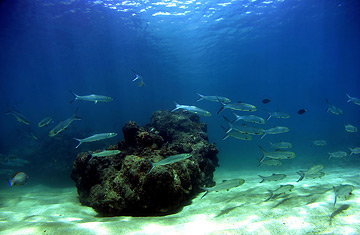
Near the close of the 1960s, a squadron of young scuba divers headed out into the warm waters of the South Pacific, tanks of air strapped to their backs and syringes at the ready. Their mission, one lethal injection at a time, was to put a stop to an outbreak of crown-of-thorns starfish, a voracious predator of fragile tropical coral reefs. Those early efforts — along with a big printing of “Save the Barrier Reef” bumper stickers — helped establish what has since been considered one of the world’s best-protected coral reefs.
More than 30 years later, some of those dive bums have grown up to become full-fledged coral ecologists, and what they are seeing today is probably making them long for the halcyon days of the ’60s. Rising ocean temperatures, compounded by other man-made factors, like pollution and overfishing, have been catastrophic for the earth’s coral. “I grew up diving and snorkeling all over the world,” says Gregor Hodgson, executive director of the coral monitoring organization Reef Check Foundation. “Those reefs are all gone.”
On August 7, researchers at the University of North Carolina released the world’s first comprehensive study on coral in the Indo-Pacific region, which stretches from Japan to Australia and east to Hawaii, and is home to 75% of the world’s coral reefs. The outlook is grim. Between 1968 and 2003, more than 600 sq. mi. of reef disappeared in the region — that’s 1% a year, twice the pace of rainforest decline — and the losses are hitting well-protected areas like the Great Barrier Reef just as hard as the stressed, overfished reefs that surround crowded countries like the Philippines. “People thought the Pacific was in much better shape,” says John Bruno, lead author of the study, which was published online by the Public Library of Science. Scientists assumed that far-flung reefs in the vast waters of the Pacific would be safely isolated from negative human impact. They were wrong. “There is no such thing as an isolated reef from the perspective of climate change,” says Bruno.



